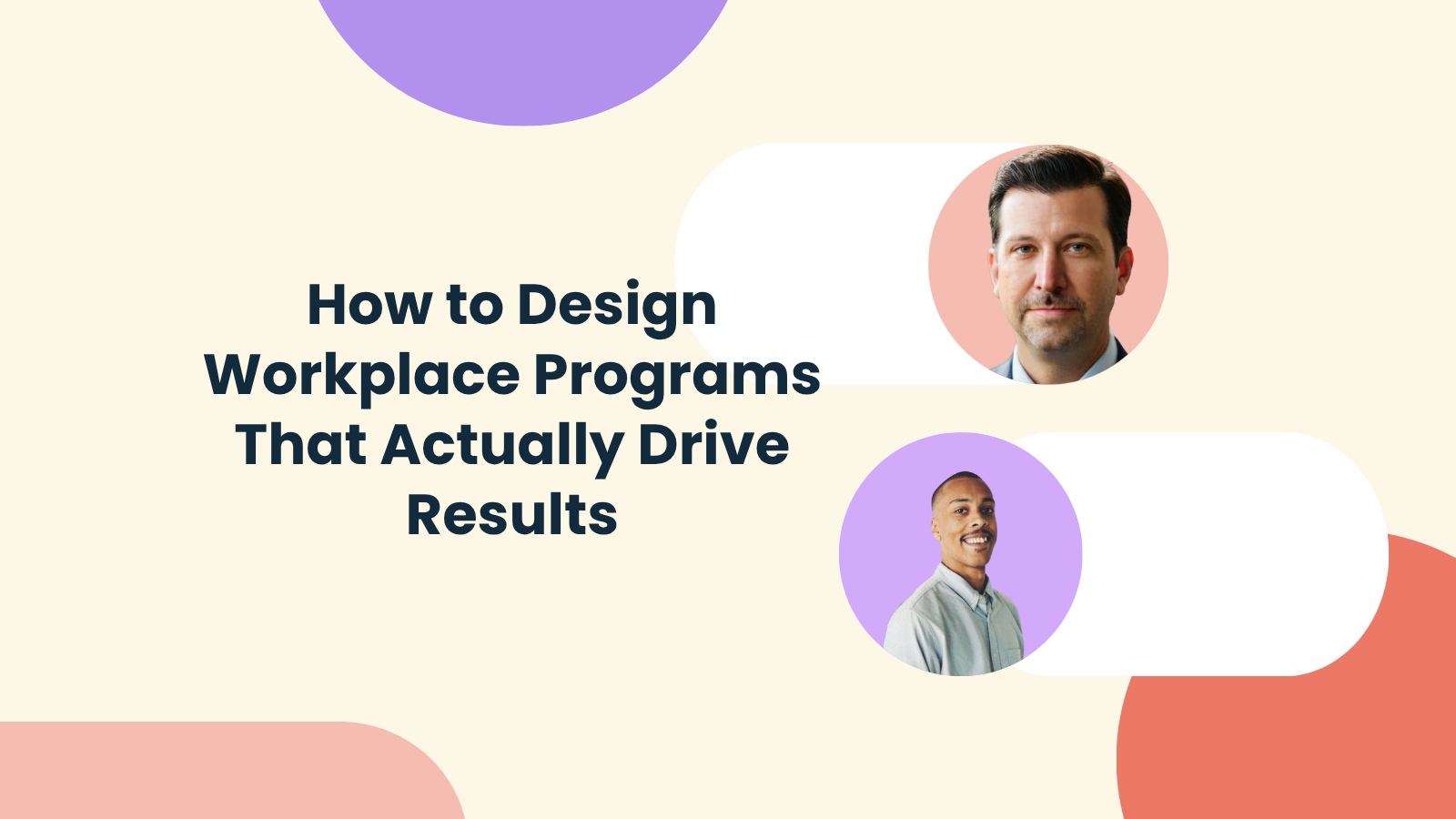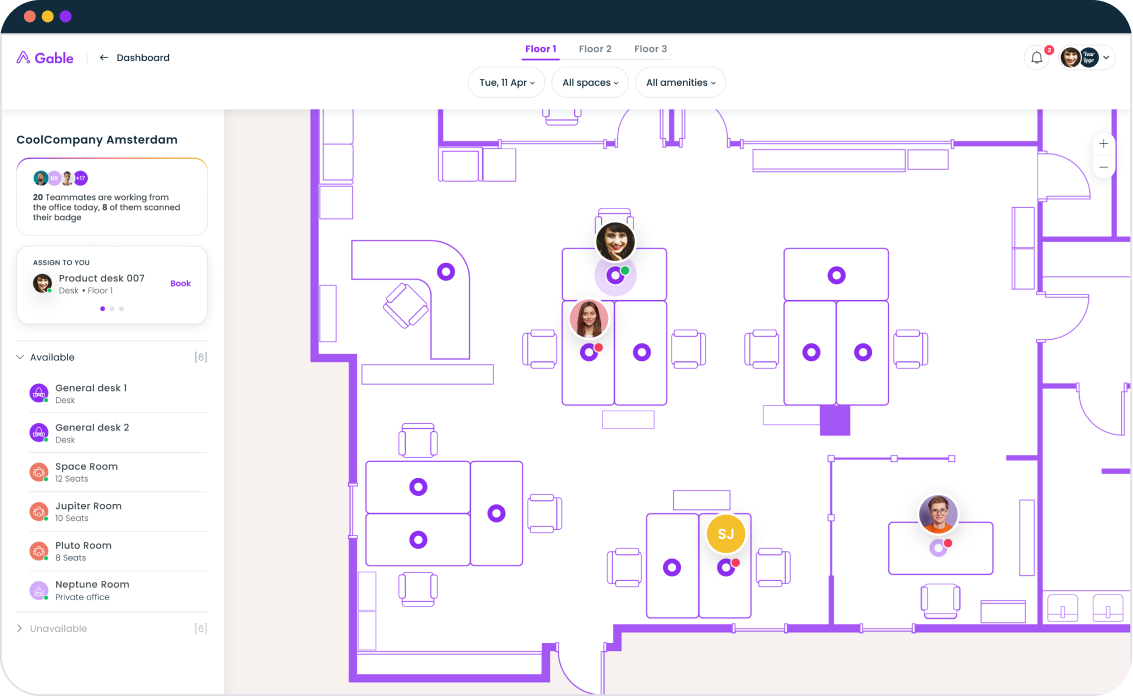A recap of our July 23rd, 2025 webinar with Bryan Porcher (Intercom) and Skye Volkening-Jeffrey (College Board)
Most workplace programs fall into the same trap: they look impressive in presentations but fail to create lasting impact. In a recent webinar, we hosted two workplace leaders who've cracked this challenge using completely different approaches—and both are winning.
Bryan Porcher, Workplace Experience Lead at Intercom, is scaling programs across five global offices while implementing a successful 3-day mandate. Skye Volkening-Jeffrey, Director of Workplace Experience at College Board, transformed 18 locations into 3 strategic sites where only 10% regular usage still drives meaningful results.
Here are the key insights from their conversation with our CEO, Liza Mash Levin.
Stop Asking, Start Observing
The conventional wisdom: Survey employees about what workplace programs they want.
The reality: This approach leads to predictable requests: pizza parties, generic team building, standard perks that generate polite participation but zero lasting engagement.
Bryan shared how he identifies opportunities differently: "I am keen on differentiation at every turn. No solution at one place has worked at the other when we're talking about things that add value and truly differentiate."
His breakthrough moment at Google came from simple observation. He noticed an engineer napping in a public area while tour groups took photos overhead; not exactly ideal for employer branding. Instead of dismissing it, he saw the valid need and researched solutions, eventually piloting MetroNaps energy pods. It took seven pitches to get $1,500 approved, but the program became standard in every office fit-out.
The takeaway: Look for authentic opportunities in how people actually work, not what they say they want.
Design for Flexibility, Not Predictability
Skye's approach at College Board centers on unpredictability as an advantage. With only 10-15% of their 2,000 employees using offices regularly, she can't predict who's coming or when.
"Instead of building our spaces for what an average workday might look like, we really want to design for what any possible workday could look like," she explained. "It could be the sales team or the tech team or the marketing team that walks through that door, and they all have different needs."
Her solution: ultra-flexible infrastructure. Conference rooms with movable walls, transformable furniture, and spaces that can shift from classrooms to boardrooms to event venues based on need.
But the real magic happens in the details. Her team operates as "concierges of the workplace," remembering that David from design needs specific monitors and that the finance team likes to spread out across multiple conference rooms when they're in town.
The takeaway: When usage is voluntary, every interaction must justify the commute.
Advocate with Data, Not Feelings
Both leaders face constant pressure to cut costs and optimize efficiency. Skye gets quarterly requests to downsize further, while Bryan manages growth across multiple expensive markets.
Skye's strategy for pushing back involves presenting three options to leadership:
- Bare minimum: Here's what we could do with the smallest possible investment—and here's how it would impact employee experience
- Balanced approach: The sweet spot between efficiency and productivity (usually her target)
- Dream scenario: What we could achieve with proper investment
"Your confidence needs to be based in data because that's what they're coming to you with," she noted. "If you're ever going to push back on efficiency requests, make sure you have the data that shows your side as well."
Bryan takes a similar approach, focusing on differentiation that delivers measurable value. At Google, his team tracked "engineering hours saved" as a key metric for their corporate concierge program—quantifying how workplace services freed up high-value employees for actual work.
Make the Mundane Memorable
Both leaders emphasized that recurring programs become invisible unless you actively refresh them. Bryan's solution involves constant iteration: "Anything that can be intermittent or leading to curiosity going into that service is super important."
At Intercom, they do organized internal events twice per quarter—manageable frequency that allows for quality execution. For St. Patrick's Day, they organized blind whiskey tastings with input from their Dublin team and shipped in orange soda that's only produced in Ireland, giving employees a literal "taste of home."
Skye's approach: "Take something away for a short time, then bring it back. All of a sudden it's new and exciting again."
The takeaway: Small, thoughtful touches create more impact than expensive, generic offerings.
Quality Over Quantity
When asked about success metrics, both leaders prioritized engagement depth over participation breadth.
Skye doesn't set attendance thresholds: "If I get 10 employees out of my 100 who love this event and think this is the greatest thing we've ever given them, that has much greater impact than 40 employees who all left thinking, 'Cool, I was here for the pizza.'"
Bryan applies the same logic to niche programs: "If bicycle repair gets to 7 people at a deep level out of 140 people who show up on Thursday—about 5%—and we can do that in different lanes, we're chipping away at the broader goal of utilization and engagement."
The AI Factor
Both leaders use AI as an analytical partner, not a replacement for human insight. Skye leverages it for space utilization pattern analysis and survey sentiment extraction, while Bryan uses it for summarizing research and trip planning.
But they're clear about its limitations. As Skye put it: "Any valuable insight I've ever gotten has come from an in-person one-on-one conversation. Data should be encouraging you to ask better questions—the answer shouldn't be in the data."
The Bottom Line
Two companies, two strategies, one shared insight: authentic workplace programs come from understanding your people's actual needs, not their stated wants.
Whether you're implementing mandates like Intercom or embracing voluntary usage like College Board, success comes from observing how work actually happens, designing for real needs, and constantly iterating based on genuine feedback.
The companies winning at workplace experience aren't the ones with the biggest budgets—they're the ones with the clearest understanding of what makes their people tick.






.svg)





.svg)
















.svg)















